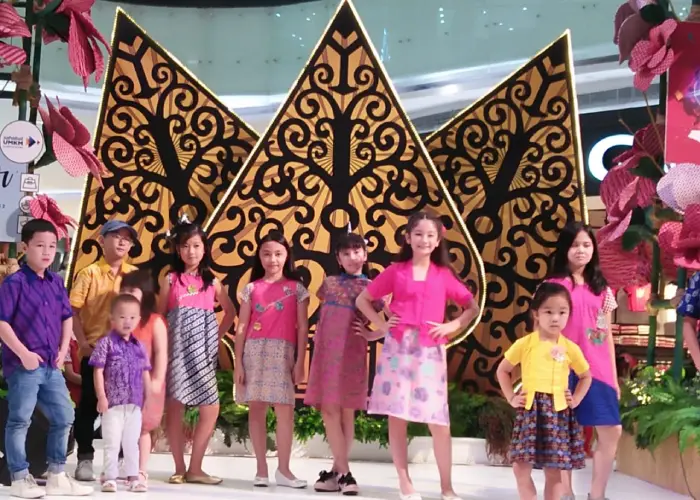Are you curious about the development of Indonesian batik? Come on, read to the end, to get to know the history of Indonesian batik from the royal era to the modern era!

Batik is a cultural heritage from Indonesia’s ancestors which has been passed down and preserved to this day. On October 2 2009, UNESCO designated batik as a humanitarian heritage for oral and intangible culture (Masterpieces of the Oral and Intangible Heritage).
That is why October 2 is celebrated as National Batik Day. Since then, the popularity of batik has continued to increase, and creations using batik have become increasingly widespread.
However, do you know the history of the development of batik in the archipelago? Because, the journey has been very long, you know, even since the time when kingdoms still ruled the archipelago. For more details, come on, read this article to the end, so that we better understand the history of the development of batik from the kingdom era to the modern era like today!
History of Indonesian Batik from Time to Time
1. Age of Empires – Indonesian Batik
Reporting from the website of the Ministry of Education, Culture, Research and Technology (Kemdikbudristek), the history of batik in the archipelago is closely related to the spread of Islamic teachings and the long history of the Majapahit kingdom. Initially, batik was brought by Indians, when the second king of Majapahit married his son to a princess from India. Then, the cloth was brought, worn, and began to develop among the Majapahit family and its soldiers who settled in the area now called Tulungagung.
Furthermore, the art of batik continued to be developed during the era of the Islamic Mataram kingdom, until it became the Sultanate of Yogyakarta and the Sunanate of Surakarta. However, initially this art was only limited to the palace, and was worn specifically by the royal family and dignitaries. Until finally, when many dignitaries began to live outside the palace, batik cloth was brought and developed to their respective regions.
2. The Age of Colonialism – Indonesian Batik
After the kingdoms collapsed, the history of batik development in the archipelago entered the period of colonialism. This era lasted a very long time, for more than 300 years.
During the Dutch colonial era, batik developed rapidly in the city of Pekalongan. At that time, the motifs used were combined with typical European motifs. Dutch batik is generally in the form of a sarong and is very exclusive. This batik cannot be owned by just anyone, you know, but only by native Dutch citizens or those of Indo-Dutch descent.
After Indonesia fell into Japanese hands, batik was adapted again. At that time, Javanese Hokokai batik appeared. Some of the unique characteristics of this batik include: it has many detailed shapes, bright colors, the motif is dominated by flowers and peacocks, and combines the concepts of morning and evening, bright moon, and Tanahan Semarangan.
3. Early Era of Independence – Indonesian Batik
The journey of Indonesian batik continues after entering the period of independence. The leaders of this country continue to strive to preserve and introduce our nation’s batik to the international world. President Soeharto even liked to give batik as souvenirs to leaders of countries in the world, you know, such as the president of the United States (Ronald Reagan) to Nelson Mandela.
The peak of these efforts was around 1994. At that time, President Soeharto gave batik gifts to 17 country leaders who participated in the Asia Pacific Economic Cooperation Summit (APEC Summit) in Bogor. This step is considered to be one of the most successful in introducing batik as one of the identities of the Indonesian nation in the eyes of the world.
4. Modern Era
Along with developments in technology and fashion trends, batik continues to adapt. Currently, batik is not only known in the form of formal shirts, but also blouses, outerwear, skirts, dresses, jackets and even children’s toys. With this development, it is not surprising that its popularity will increase, not only among adults, but also young people and children.
That is the history of the development of batik in Indonesia from the kingdom era to the current modern era. Hopefully, by understanding its history, we will have a deeper love for the legacy of our ancestors.
For those of you who want to instill a love of batik from an early age in your little one, come on, check out the list of high quality children’s batik products from the Gawean Dewe children’s batik shop! By offering a sustainable batik concept as well as bright and cute colors and designs, this shop offers a variety of products that are very suitable for your child, ranging from shirts, kebaya, dresses, dolls, and many more.
Come check it out now!

